ENGLISH TEACHERS DO NOT JUST TEACH LANGUAGE
I remember a poor student in Tay Ninh once said: "I'm afraid of speaking English because I'm afraid of making mistakes." I just smiled and replied: "It's okay, because learning a new language is also learning courage."
Since then, I realized that English teachers are not only teaching language but also teaching confidence, teaching students how to be confident, how to think and how to connect.
Language in the classroom is not only a tool of communication but also a means for students to form perceptions, to understand themselves and others. As Soviet psychologist Vygotsky (1896-1934) once wrote: "Language is the tool of thought". And when teachers help students use language to think, to ask questions, to express their opinions, they are no longer just teachers. They become instructional leaders.

Mr. Le Hoang Phong (red T-shirt, center) during his participation in the Community of Practice program of School Leaders of the Teach For All network in Chile, August 2025
PHOTO: NVCC
I often tell my colleagues: "We don't just teach lessons, we lead learning."
Because education is not just about imparting knowledge, but also about awakening the ability to learn and the confidence in others. In the era of globalization, English may be the second language, but learning is always the first language of the heart. And the teacher, with patience, wisdom and dedication, is the beacon that guides that journey.
"Teaching is not just a profession. It's a promise to believe in others, until they can believe in themselves."
C HILE STORY
This August, I had the opportunity to attend the Teach For All School Leaders' Community of Practice in Chile, an initiative that brings together principals and educators from more than 60 countries and territories to learn about the art of leadership and learning.
One chilly morning at the foot of the Andes, I listened to a Chilean principal say: "Every Friday afternoon, I spend two hours reviewing the week's lessons with young teachers, not to grade them, but to ask what the students learned, and what we learned from them?"
That simple statement made me think for a long time. In Chile, school leadership is not defined by administrative power, but by the ability to create a learning culture where teachers and students grow together in a space of trust, reflection, and learning.
I am reminded of the theoretical framework of Kenneth Leithwood, a professor of education in Canada, who asserted that the impact of principals on students comes mainly from how they promote the professional development of teachers. A good principal not only helps students learn better, but also inspires teachers to become lifelong learners. That is the spirit of instructional leadership, where principals and teachers together ask questions not about grades, but about the meaning and quality of learning.
THE PRINCIPAL IS THE METER KEEPER, THE TEACHER IS THE MUSICIAN
The more I travel, the more I believe that the principal is the one who keeps the rhythm of the learning orchestra, and the teachers are the musicians who create the sound of knowledge. When every teacher is encouraged to learn, to try, to teach with curiosity and love, the school naturally becomes a living learning community, where teaching is also a form of learning, and learning is a journey of teaching oneself.
Looking back on that journey, I remember a year ago, also within the framework of the Teach For All community of practice for school leaders, that time in Mumbai, India. In a small public school in a densely populated residential area, I met young English teachers, none of whom held a management position, but each of them was leading in their own unique way.

Mr. Phong and principals from the Teach For All network visit a school in Mumbai, India.
PHOTO: NVCC
They not only teach grammar or practice communication skills, but also proactively design practical learning topics for colleagues: teaching English through documentaries, through community projects, through social topics that students are interested in. Each month, they organize a "learning showcase" to introduce new ideas, share students' achievements and invite colleagues to give feedback. That small school has almost become a "learning laboratory", where teachers are creators, not just implementers of the program.
I realized that it was the spirit of "teacher leadership". As Professor Alma Harris, the world's leading educational researcher, once affirmed: "When teachers are empowered to lead, they will become real agents of change."
In Mumbai, the principal is not the center of all innovation, but rather serves as a “space holder” for the team to shine. It is the teachers who drive innovation, from developing learning materials tailored to disadvantaged students to organizing professional learning groups to develop CLIL (project-based learning) skills. Teachers publicly share their lessons for peer analysis, and they see the progress of the entire school as a shared responsibility, not just their own. This initiative and collaboration has transformed the school into a true learning community.
Vietnam paves the way for a new generation of educational leaders.
We are facing a historic opportunity with the 2025 Teachers’ Law and the English as a Second Language in Schools strategy, all paving the way for a new generation of educational leaders. However, for these policies to truly make a difference, it is important not just to rewrite the curriculum, but to rewrite the way we lead learning.
It is time we move from “teaching to meet targets” to “teaching to learn”, where every school becomes a learning community, where leaders and teachers grow together in a mutual learning relationship.
Source: https://thanhnien.vn/tieng-anh-la-ngon-ngu-thu-hai-nhung-su-hoc-moi-la-ngon-ngu-dau-tien-185251113211915751.htm




![[Photo] General Secretary To Lam receives Vice President of Luxshare-ICT Group (China)](https://vphoto.vietnam.vn/thumb/1200x675/vietnam/resource/IMAGE/2025/11/15/1763211137119_a1-bnd-7809-8939-jpg.webp)

![[Photo] Prime Minister Pham Minh Chinh meets with representatives of outstanding teachers](https://vphoto.vietnam.vn/thumb/1200x675/vietnam/resource/IMAGE/2025/11/15/1763215934276_dsc-0578-jpg.webp)

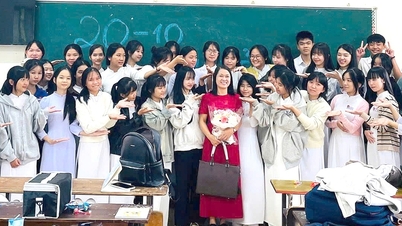





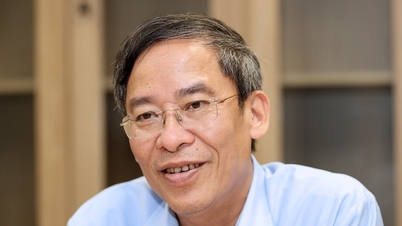




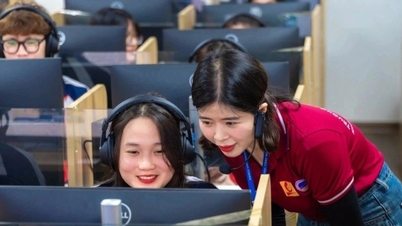



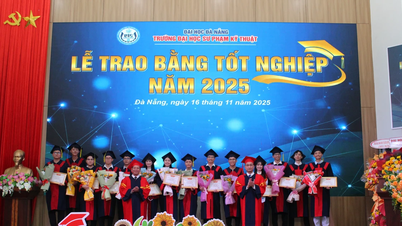
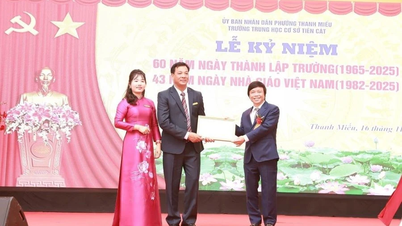
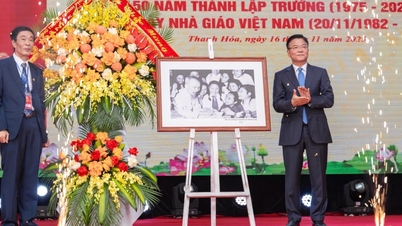


















































































Comment (0)